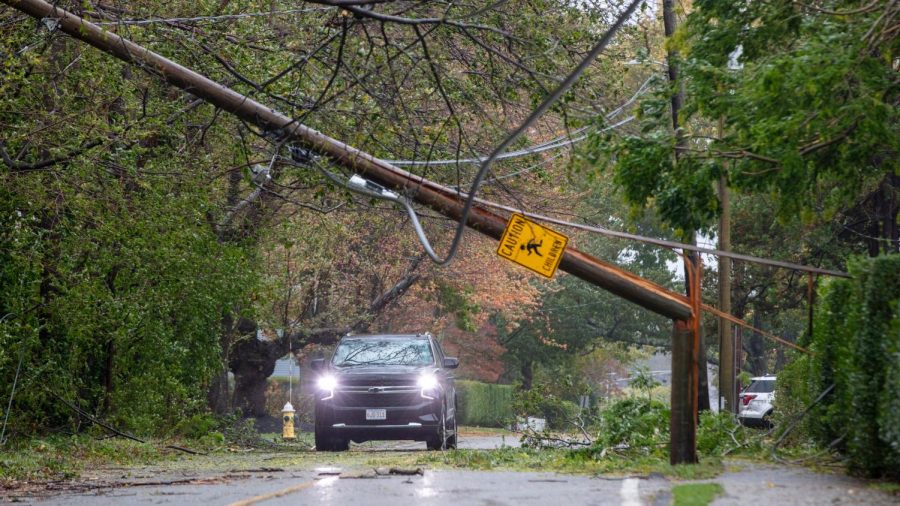Eruption of Destruction
November 30, 2021
On Tuesday, October 26th, a dangerous and threatening ‘bomb cyclone’ hit The Northeastern United States. The cyclone brought strong winds, rains, and destruction. The winds were especially damaging, cutting out power and other necessities. The debris left from the cyclone has damaged New England greatly.
The storm started Tuesday, October 26th, with winds ranging between 60 to 100 MPH. These winds were as high as those of a hurricane, with many counties issuing warnings about not staying too close to windows.
One of the biggest casualties from the cyclone was the loss of power. CNN reports that 600,000 homes and buildings were left without power, Massachusetts and Rhode Island being the main states affected by it. They were left almost entirely in darkness.
Not only were there immense power outages, but there was also flooding and debris left throughout the streets of New England. The Washington Post reported that ocean surges brought four feet tall water into the streets. This brought coastal flooding, which was greater than anticipated. The East Coast was susceptible to flooding due to the wet summer they had. It was full of rain storms from Hurricane Ida, Henri and Elsa. There was also flash floods earlier in September. High tides and the cyclone combined forces to make waves over twenty feet tall. The winds from the cyclone ripped trees out of the ground and onto roads, causing driving to be limited. This led to schools and other organizations being cancelled, especially in Cape Cod. Because Cape Cod is a peninsula, there are only a few ways to get to the main parts of Massachusetts, and the cyclone stopped travel across those roads.
Another quality that classifies the storm as a bomb cyclone is the rapid drop in air pressure. The Guardian reports that the air pressure fell from around 1000 millibars to 980 millibars, enough to classify it as quick drop in pressure. Category 2 hurricanes usually have air pressures of 975, and the storm got dangerously close to that number. A bomb cyclone is a storm that intensifies within a 24 hour period, which means that the winds and rains will only stay for so long. By Wednesday night, the winds were already starting to calm down. Nonetheless, Massachusetts and Rhode Island were still being hit with moderate winds and rains. By Thursday, the weather had almost completely calmed down and normal patterns were resumed. The clean up of debris was moderately slow. NBC Boston says that because of the winds, it was hard for power crews to fix the power lines that had fallen.
After first responders cleaned up the damage, the effects of the storm were almost completely gone and the weather had returned to normal. The bomb cyclone was quick, yet very impactful. It has been two years since the East Coast has experienced one, however they were all reminded with the devastation from this one.



